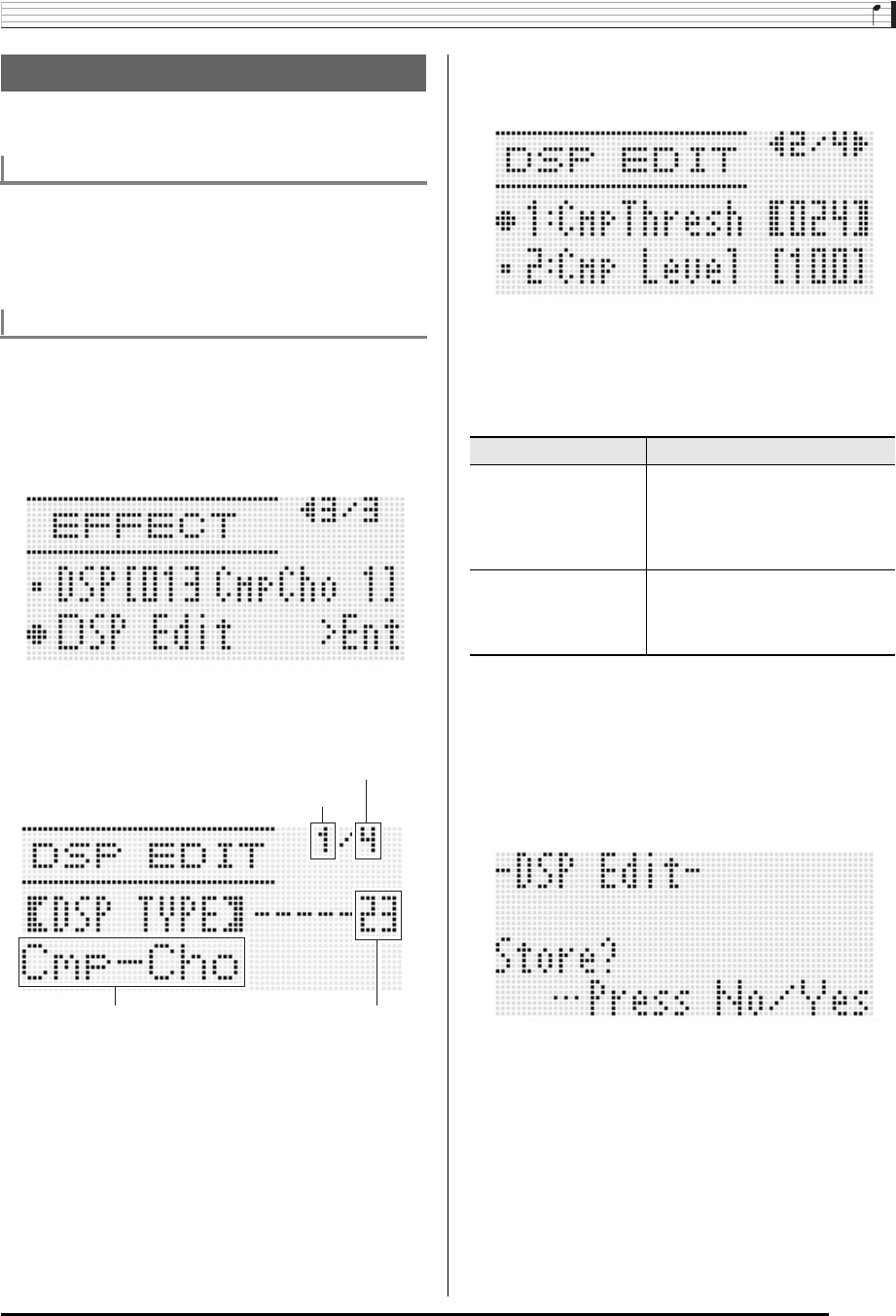
Applying Effects to a Sound
E-37
You can create a user DSP by editing one of the built-in
preset DSPs.
DSP areas numbered 101 through 200 are for storage of user
DSPs. You can have up to 100 user DSPs stored in memory
at one time. To recall a stored user DSP, use the same
procedure you use to recall a preset DSP. See “To use a
DSP” (page E-36) for more information.
1.
Referring to the “DSP Type List” (page E-120),
select the DSP type you want to edit in order to
create your user DSP.
2.
Use the R-17 (y) button to move the 0 to “DSP
Edit”.
3.
Press the R-16 (ENTER) button.
• This displays page one of the DSP editor screen. Use
this screen to select the DSP type.
• You can use the R-17 (u, i) buttons to scroll
between pages.
4.
Use the dial or R-14 (–, +) buttons to select a
DSP type.
5.
Use the R-17 (t, y) buttons to move the thick
brackets (%) to the parameter you want to
change.
6.
Use the dial or R-14 (–, +) buttons to change the
setting value.
• Pressing the R-14 (–, +) buttons at the same time
returns a parameter to its initial default setting.
• The following describes each of the parameters.
• Changing the DSP parameter while a note is being
output from the Digital Keyboard may cause noise to be
generated. This does not indicate malfunction.
7.
Repeat steps 5 and 6 as required to configure
other parameters.
8.
Press the R-15 (EXIT) button.
• This displays the confirmation screen shown below.
To cancel the editor operation without saving the edited
results, press the R-14 (NO) button.
Creating a User DSP
User DSP Numbers
To create and save a user DSP
Total number of pages
Currently displayed page
DSP type DSP number
Parameter Name Description
Parameters 1 through 8 The number of parameters and
settings available for each
parameter depends on the DSP
type. For details, see “DSP
Parameter List” (page E-121).
DSP RevSend
(DSP Reverb Send)
Specifies how much of the
post-DSP sound should be sent to
reverb. (Settings: 0 to 127 ;
Default: 40)
CTK6000_e.book 37 ページ 2010年7月12日 月曜日 午後12時50分
